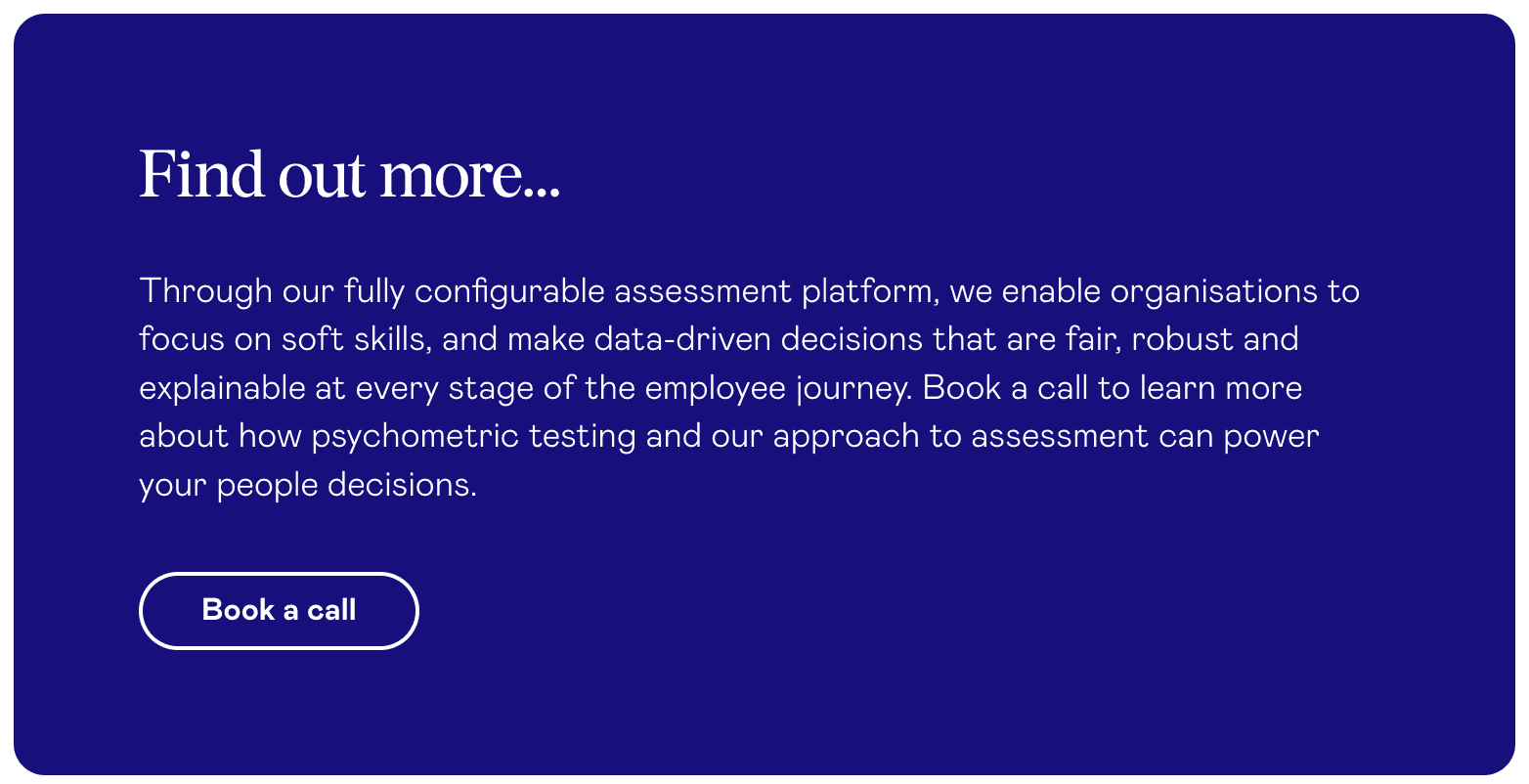Take a sneak peek of the product with an interactive tour | View now
How to improve your diversity recruiting strategy

How to increase diversity in recruitment is a question that is at the top of the talent acquisition agenda. Although improving workplace diversity has been a long-standing goal for organisations, recent movements such as Black Lives Matter have spurred organisations into more urgent action. Systemic discrimination is common and is creating career injustice for people from underrepresented groups.
Talent acquisition tackles only one facet of the problem of systemic racism and inequality but since the recruitment process is the gateway into an organisation, recruitment strategies and the interview process play a critical role in making diversity and inclusion part of the organisational fabric.
Why is diversity in recruiting important?
Recruiting diverse talent is good for business. Workplace diversity has been shown time and time again to create better commercial results. Hiring diverse talent also has a positive bearing on culture and is one of the foundations required for inclusion to thrive. It’s also important to your candidate pool and research shows that younger people in particular want to work for employers that have a commitment to diversity and inclusion.
What are the benefits of improving diversity in hiring?
Workplace diversity improves performance
Research by McKinsey & Company in 2020 demonstrates how workplace diversity affects company performance. On a number of fronts from profitability to equity, diversity matters.
- Companies in the top quartile for diversity out-perform those in the fourth quartile by 36% in profitability.
- Companies in the top quartile for gender diversity on executive teams are 25% more likely to have above-average profitability than companies in the fourth quartile.
- Companies with more than 30% female executives are more likely to outperform companies where the percentage of female representation is 10 to 30%.
Your organisation’s talent pool is expanded by diverse talent
Companies that attract talent from a more diverse background expand their talent pool exponentially but accessing previously untapped talent. Changing your recruitment process to better attract and fairly assess talent regardless of socioeconomic status, physical or mental disability, sexual orientation, gender identification, helps to build a diverse workforce in line with you company’s needs
Diversity and inclusion matters to Boards
In some countries and industries, workforce diversity needs to be reported at Board level, meaning that it is critical to how a company’s performance is viewed. For example, in the UK, the government is undertaking a five-year review to monitor female representation in leadership roles in FTSE companies. Whilst it’s important not to be led too strongly by targets or quotas, they provide a benchmark and a tangible measure.
Diverse talent improves access to a future talent pool
Job seekers, especially younger job seekers, want to work for an organisation that welcomes diverse candidates. Research in 2020 by Intel found that 56% of job seekers aged 18 to 24 would hesitate to take a job if there were no minority or traditionally marginalised demographics represented among the company’s senior leadership team. A lack of diversity in the workforce will therefore compromise the talent pool available to your organisation for talent acquisition.
Why do companies struggle to recruit diverse talent?
Most organisations are putting in place initiatives to improve diversity in recruiting. However, there are hurdles to be overcome in the recruitment process. If bias during the hiring process compromises fair decision making, it will ultimately compromise workforce diversity.
Here are the potential danger areas that compromise diversity in recruiting:
Screening via killer questions
Using killer questions is a common tactic used by talent acquisition to manage a large volume of applications. However, if the killer questions rely on exclusive knowledge or experience, for example ‘which university did you go to’, they can be heavily biased in favour of certain groups and further embed unfairness and bias, disadvantaging diverse candidates.
The CV screen
The CV, an important part of the traditional recruitment journey, is loaded with opportunity for biased decision making. Not only do CVs define candidates through their past achievements rather than future potential, bias also creeps in because of presentation choices in formatting of the CV and the reader’s unconscious bias relating to candidates’ names, and employment history.
Reliance on academic achievement
Education level used to be a minimum requirement for roles but in recent years, organisations are increasingly moving away from this measure. Academic achievement is linked to education opportunity, and therefore those from more disadvantaged backgrounds in the candidate pool will be less likely to be considered even when they have great potential to succeed. Screening based on education can damage social mobility and discriminate against candidates from disadvantaged groups.
The interview process
Whether face to face or online, unstructured interviews have been shown to be much less predictive than either structured interviews or other more objective assessment measures. With a huge element of personal judgment, the interview process is one of the greatest causes of biased recruitment decisions.
The assessment centre
The assessment centre is a good opportunity to use a mix of different assessment methods. But if assessors are not well trained in managing unconscious bias or if the content of the centre itself favours particular groups, there is potential for biased decisions to be made.
Data collection or use
All too often biodata on candidates is either not collected, or it’s stored in separate systems with no way to interrogate the data as a whole. If data isn’t connected in one platform, it’s not possible to continually diagnose and optimise the hiring process for fairness and diverse candidates.
How to improve diversity in recruiting
To increase diversity in recruitment, there are a number of steps that hiring managers and talent acquisition teams can take during the recruitment process. By creating a fair and bias free recruitment strategies, organisations will be able to attract a more diverse talent pool and build a more diverse workforce.
Be in the right places
Use a varied combination of in-person and virtual channels to interact with diverse candidates. Acknowledge that some formats of communication are less accessible for some than others and think about how you can offer alternatives. Consider partnering with institutions and groups that specialise in connecting with candidates from underrepresented groups. Take a look at our work with John Lewis to make assessment more accessible to candidates with language-based learning difficulties.
Allow for reasonable adjustments
Once candidates enter the recruitment funnel, give them the opportunity to request reasonable adjustments to level the playing field. For example, this might include removing timing from an assessment that requires reading or offering a work experience trial day to assess candidate behaviours and strengths rather than an online psychometric assessment.
Articulate your position
Demonstrate what your organisation is doing to foster better diversity and inclusion across your talent acquisition channels. This can include your careers page on your website, in-person and virtual career events and also videos within the recruitment process showing a day in the life of current employees.
Better role design
When designing roles and writing job descriptions for job boards, ensure that hiring managers focus on building a profile of ‘what good looks like’ in the role. Think carefully about what a successful hire will be and define it clearly and fairly whilst avoiding stereotypes that may discourage applications from diverse candidates.
Identify unconscious bias
Identify sources of adverse impact and unconscious bias to identify the weak points in the hiring process. Machine learning can flag these areas quickly. The assessments used in the recruitment process can be optimised and refreshed on an ongoing basis. This will ensure that bias in the recruitment process will not negatively impact the performance of diverse candidates in the long term.
Collect diversity data
Collect the right data from the outset. This includes inherent characteristics such as gender, age, ethnicity, language, socio-economic background. Be clear to your candidate pool about how and why this data will be used. This data can be used to track how well you are recruiting for diverse talent.
Fair recruitment process design
During design and testing of your assessments used in the recruitment process, include a diverse population in order to generate representative data. Actively source diverse candidates to participate to ensure the assessment is interpreted fairly. This will help to reduce bias and to ensure that diversity recruitment is not hampered by the choice of assessments.
Monitor assessment outcomes in real time
Ongoing monitoring, analysis and calibration ensure bias is closed down and that unfair decisions at the point of hiring are not transposed into career progression. Failure to do this can affect the ongoing career development of diverse candidates and can negatively impact workforce diversity.
Train hiring managers
Ensure that assessors, including hiring managers, are consistently trained in managing unconscious bias to enhance the objectivity of decision making, particularly in the interview process. Flagging instances of biased decision making helps to level the playing field for diverse candidates.
Secure your organisation’s future through improving diversity in hiring
Diversity and inclusion are critical to your future talent pool and organisational success. If you are looking to improve diversity in recruitment in your organisation, contact us to book a demo.
